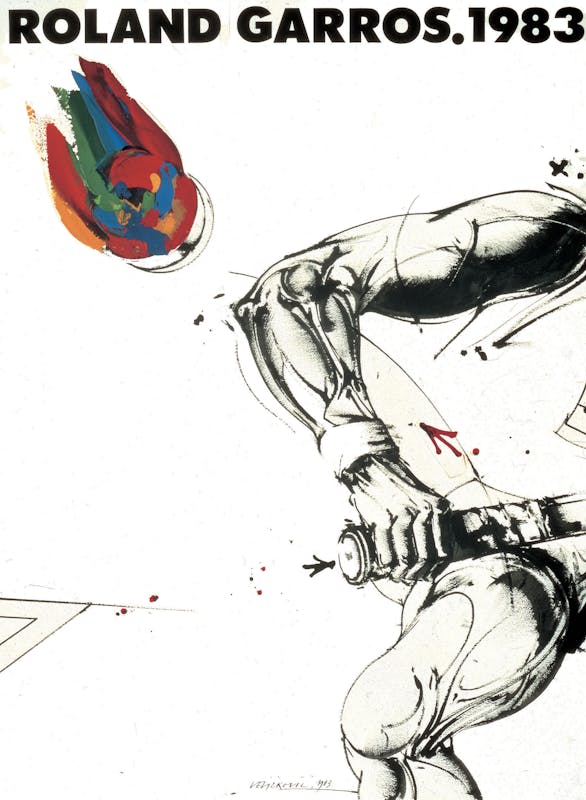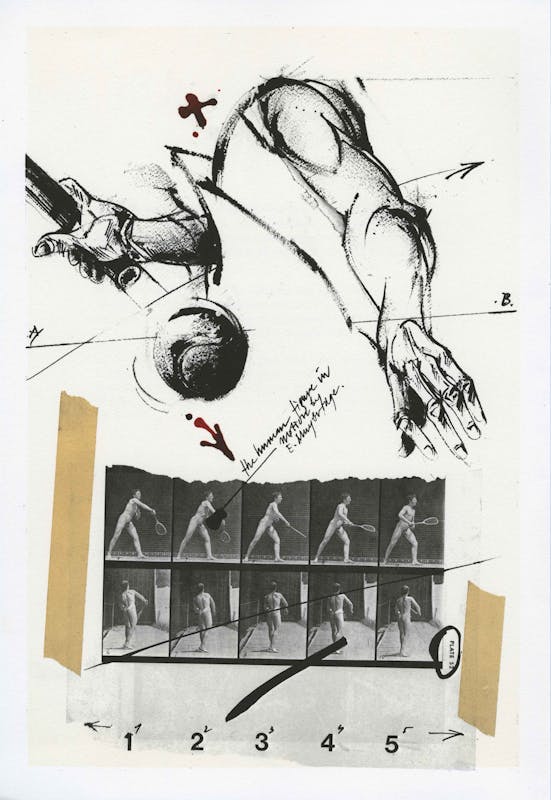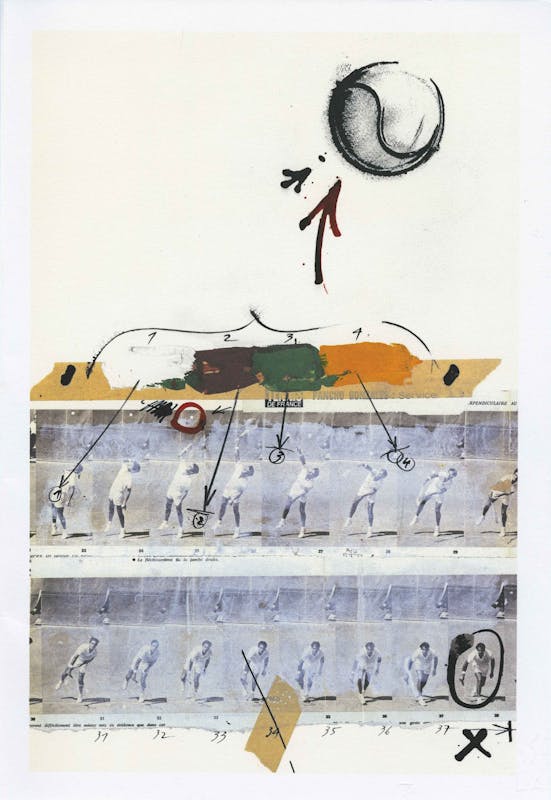The artist Vladimir Velickovic passed away on 29th August 2019. Thirty-six years ago, in 1983, he was chosen by the French Tennis Federation to create the official Roland Garros tournament poster. We take a look back at the life of this leading artist from the Narrative Figuration movement.
Vladimir Velickovic, a key artist from the movement
The artist Vladimir Velickovic passed away on 29th August 2019. In 1983, he was chosen to create the official Roland Garros poster.
 ©Vladimir Velickovic/FFT
©Vladimir Velickovic/FFTRoland Garros 1983. The 20,000 spectators on Centre Court were in raptures: Yannick Noah had won the final against Mats Wilander. The French player had enjoyed an almost flawless run through the fortnight, having only dropped one set.
The 23-year-old was simply astounding: athletic body, rippling muscles and a powerful hit that gave his opponents very little breathing space. His physique was not unlike the figure depicted in the new tournament poster. Had the artist used Noah as a muse?
 ©Vladimir Velickovic/FFT
©Vladimir Velickovic/FFTDiscovering the motion photography
Vladimir Velickovic was the fourth artist the FFT had asked to create the tournament poster. Following on from Valerio Adami, Eduardo Arroyo and French artist Jean-Michel Folon, they decided upon this Belgrade-born artist, who had been awarded a prize at the Biennale de Paris in 1965 and had just been appointed professor at the Ecole Nationale Supérieure des Beaux-Arts in Paris.
An architecture graduate, painter and sculptor, Velickovic came to France in the early 1970s. Here, he developed his own drawing and painting style, though he had a preference for drawing.
At the same time, he discovered the work of motion photographer Eadweard Muybridge, a pioneer in chronophotography like France’s Etienne-Jules Marey. It was on the actual Roland Garros site that he studied the running style of humans and animals. This revelation led him to adopt a different approach for depicting movement.
 ©Vladimir Velickovic/FFT
©Vladimir Velickovic/FFTMovement and Indian ink
It was perfectly natural that his work for the 1983 Roland Garros poster should involve the way that a player moves. His many preparatory sketches are proof of this: helped by the “Technicorama” created by photographer and former player Gil de Kermadec, he dissected a player’s movement and reproduced it using Indian ink.
“My personal journey showed me that colour dials down an image’s power,” he said. The result was a powerful piece, though a lot less tragic than his other paintings.
The FFT owns the original 1983 poster, as well as the numerous preparatory sketches drawn by the artist.
 ROLAND-GARROS
18 May - 7 June 2026
ROLAND-GARROS
18 May - 7 June 2026

